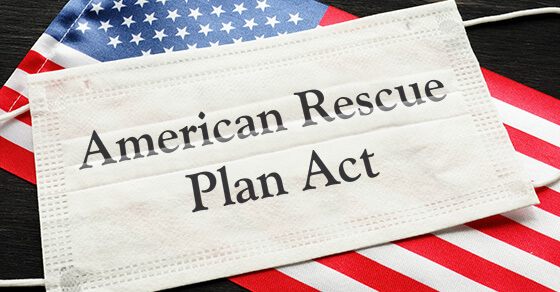On March 11, 2021, the American Rescue Plan Act of 2021 (ARPA) was signed by President Biden. ARPA is a $1.9 trillion economic stimulus package proposed by Biden to speed up the United States’ recovery from the economic and health effects of the COVID-19 pandemic.
ARPA includes provisions for COBRA and Dependent Care Flexible Spending Accounts (DCA).
COBRA: The provisions for the COBRA continuation coverage premium subsidy covers 100 percent for individuals and families who experienced an involuntary termination of employment or reduction in hours.
This subsidy will be available for Assistance Eligible Individuals (AEIs), as determined by the Act, from April 1, 2021 through September 30, 2021. COBRA participants must meet the below criteria in order to be an AEI:
- Coverage was lost due to involuntary termination of employment or reduction in hours.
- The COBRA participant is still within the COBRA eligibility period as of April 1, 2021.
- Eligible COBRA participants who do not have an election in place will have the opportunity to make an election during an Extended Election Period and will be able to take advantage of the subsidy effective April 1, 2021. This will be referred to as the “lookback period” in determining member eligibility.
- Eligible COBRA participants who have an election in place as of April 1, 2021 will be able to take advantage of the subsidy effective April 1, 2021.
- Eligible COBRA participants who become eligible for COBRA continuation coverage on or after April 1, 2021 will be eligible for the subsidy while it is in effect.
ARPA requires the Department of Labor (DOL) to provide model notices within 30 days from the date of enactment — on or before April 10. The Act requires that individuals in the lookback period, as well as those currently enrolled, receive a notification regarding the subsidy within 60 days of April 1, 2021; newly eligible COBRA participants should be notified within the current standard COBRA time frames.
Dependent Care FSAs (DCA): The provisions for the DCA is for the calendar year 2021 and raises the pre-tax contribution limits for participants. At this time, we are still awaiting clarification on how this affects non-calendar year plans from the IRS.
The new DCA annual limits for pre-tax contributions are $10,500 per household. It’s important to keep in mind that if you are a married individual filing separately, the maximum pre-tax contribution is $5,250 for each individual.
Keep in mind that this is an optional provision that each employer can choose to put in place and will require a plan amendment. FBA also strongly suggests that any employer who chooses to increase has the 55% Dependent Care Average Benefits test performed to ensure you still meet Non-Discrimination requirements.
Disclaimer the ARPA Dependent Care FSA increase of $10,500 is only for the calendar year 2021, regardless of the cafeteria plan year.
- A Dependent Care FSA is a pre-tax benefit account used to pay for services such as day care, preschool, summer camps and before- or after-school programs. Funds may be used for expenses relating to children who are under the age of 13 or incapable of self-care and who live with the FSA holder more than half the year.
- Elder care may be eligible for reimbursement with a Dependent Care FSA if the adult lives with the FSA holder at least eight hours of the day and is claimed as a dependent on the FSA holder’s federal tax return.
Flexible Benefit Administrators is here to answer questions you may have in regards to the new provisions outlined in the American Rescue Plan Act of 2021 to the best of our abilities. We will continue to update as more information becomes available from the Department of Labor (DOL) and IRS.
